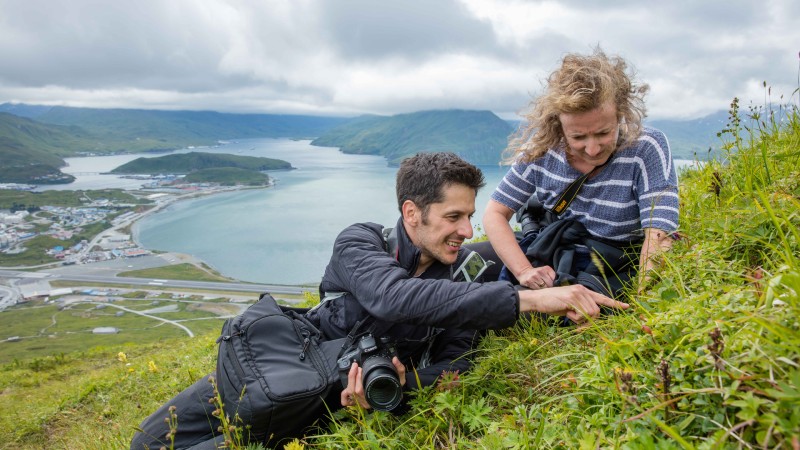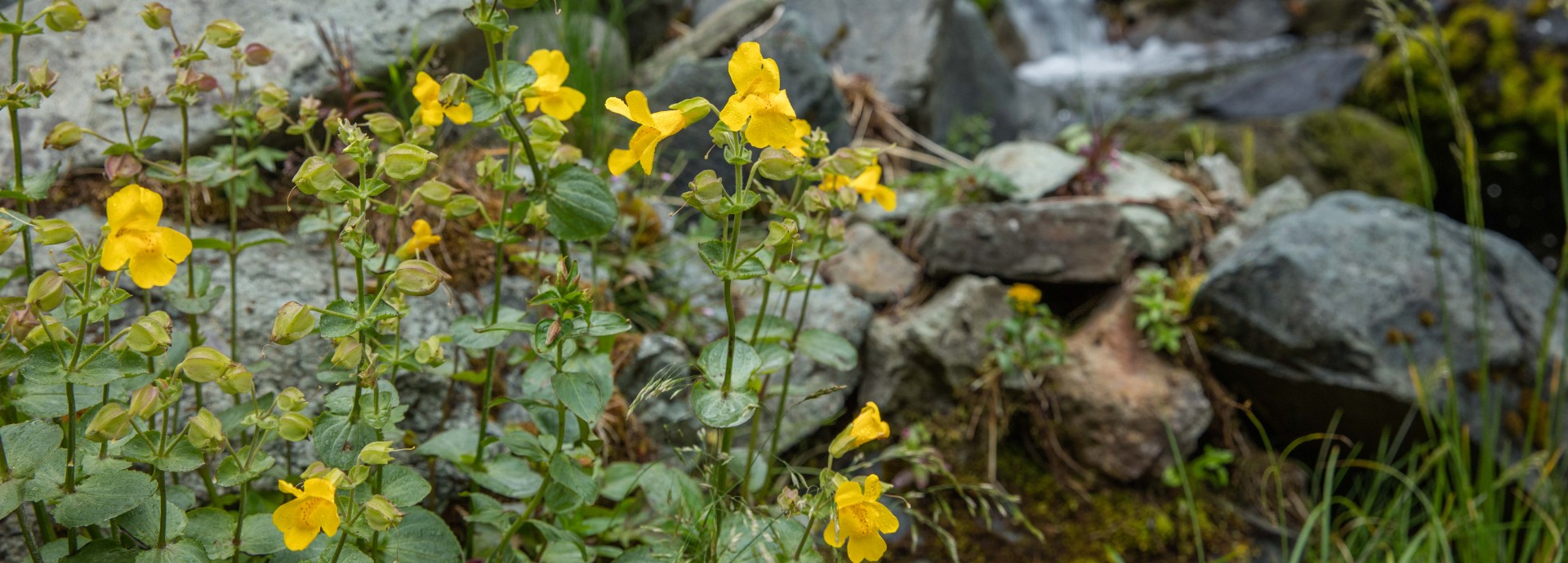An Alaskan expedition and large-scale study led by a University of Stirling scientist has tracked the origin of an invasive plant population in the UK, tracing it back to the remote Aleutian Islands.
Dr Mario Vallejo-Marin was part of a team of ten researchers from across Europe and North America who undertook a trip funded by National Geographic to uncover the origins of the yellow monkeyflower (Mimulus guttatus).
Following the largest and most in-depth analysis of its kind, researchers concluded that the species now found in the UK originated in Alaska, before it mixed with other plants native to the British Isles and spread further across the world.
The expedition saw scientists follow in the footsteps of explorer Grigori von Langsdorff, who is thought to have first encountered the monkeyflower whilst working for the Russian Tsar in Alaska in the early part of the 19th century.

Dr Vallejo-Marin was joined on the Alaskan expedition by local botanical authorities Suzi Golodoff and Stacy Studebaker. (Photo: Roger Topp)
It is believed Langsdorff brought the plant into Europe, kickstarting an invasion which saw the species spread across large parts of the world, and this new research backs up this theory.
Published in Communications Biology, the study was the first comprehensive sample of the monkeyflower in the Aleutians and involved the collection of 521 plants from 158 populations, alongside a large-scale genetic analysis of monkeyflower populations around the world, providing valuable insight into how the monkeyflower became an invasive species.

Associate Professor of Biological and Environmental Sciences
We were able to travel the same awe-inspiring trail that Langsdorff took when he crossed Unalaska, sampling monkeyflowers at places that we believe this fascinating species originated from. Up to now, imperfect historical records have made it challenging to fully understand and reconstruct the history of biological invasions such as these.
Dr Mario Vallejo-Marin, Associate Professor of Biological and Environmental Sciences who led the expedition and study, said: "Unravelling the history of biological invasions provides a starting point to understand how invasive populations adapt to new environments. These invasions are one of the most important threats we see to biodiversity so understanding how native and invasive populations are related to one another goes some way to helping us understand how to best protect environments in the future.”
The multinational research – entitled ‘Population genomic and historical analysis suggests a global invasion by bridgehead processes in Mimulus guttatus’ – was funded by National Geographic, the Natural Environment Research Council, the National Science Foundation, the European Research Council and the Mésocentre de Calcul Intensif Aquitain.
Dr Vallejo-Marin was joined on the Alaskan expedition by experts from universities in the USA and Canada as well as local botanical authorities Suzi Golodoff and Stacy Studebaker. The research involved collaborators who sampled species across the world including New Zealand and the Faroe Islands.

